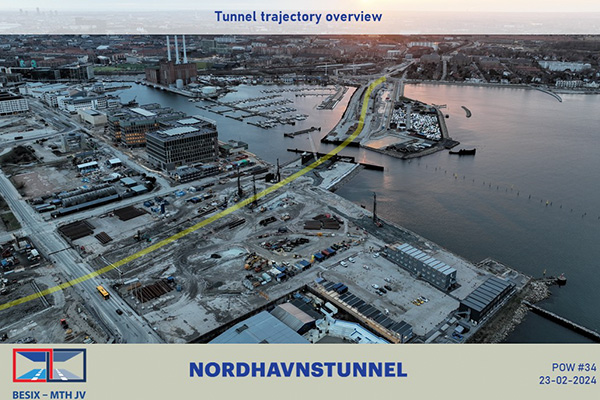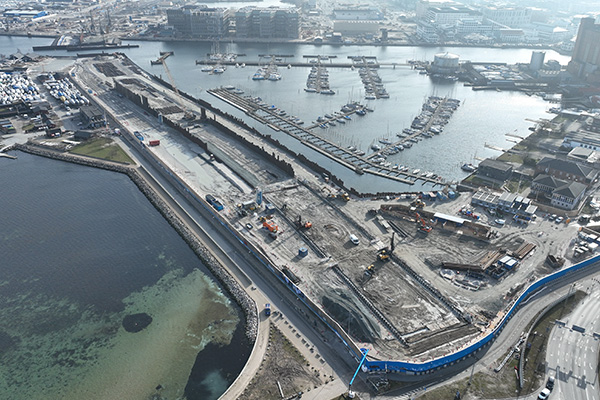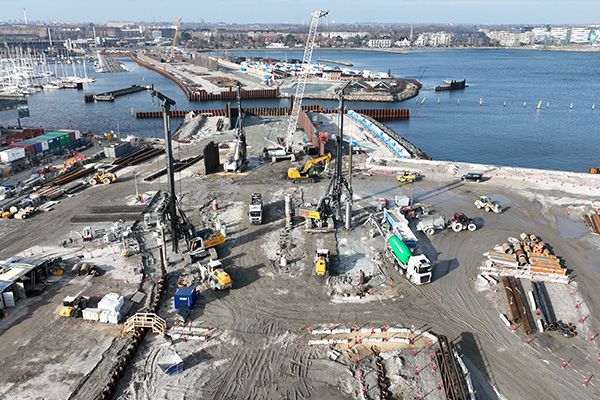Program Schedule
Site Visit
Wednesday, 10 April, 2024
Nordhavn Tunnel Project (BESIX - MT Højgaard Denmark)

| Time | Activity |
|---|---|
| 1400 | Meeting point Tivoli Congress Center & transport to the construction site |
| 14:30 | Presentation of the project |
| 15:30 | Site Visit |
| 17:00 | Coffee & talk, transport to Tivoli Congress Center |
| 18:00 | Return to Tivoli Congress Center |


Thursday, 11 April, 2024
| Time | Title and Speaker |
|---|---|
| 9:00 - 9:30 | Registration |
| 9:30 - 9:45 | Opening Jakob Hausgaard Lyngs, President Danish Geotechnical Society & Maurice Bottiau, President DFI Europe |
| 9:45 - 10:25 | Keeping the geotechnical triangle in balance. Lessons learnt from
failures. Tony O’Brien, Mott MacDonald |
|
Geotechnics involves a number of interlinked activities from
initial
desk studies/investigations through characterisation/analysis
and,
importantly, linking design to construction means and methods.
This
complex interplay between different skills and activities can be
succinctly summarised by ‘The Geotechnics Triangle (i)’. Success
requires the Geotechnics Triangle to be kept in balance. Lack of
attention or skills in any part of the Triangle often leads to
failure. Effective communication between specialists and
non-specialists also plays a pivotal role. This presentation
will
traverse across the Triangle, from initial studies through to
foundation construction, and give mini case history examples of
how
projects failed when key aspects in the Triangle were not given
proper attention. A feature of Geotechnics failures is that they
can
be ‘Black Swan’ events (ie have disproportionate consequences
well
beyond any project risk contingencies) – this needs to be better
recognised by the wider industry. Some suggestions will be
offered
about how we can reduce risks and rise to future challenges. |
|
| 10:25 - 11:05 | Masthuggskajen, where the soft clay and strict design requirements
are quite a challenge. Jonas Ostersen, Aarsleff |
|
In central Gothenburg at Masthuggskajen, a peninsular in the Göta
River is currently under construction. The peninsular consists
of three construction pits enclosed by a pile deck. The soil
conditions are predominated by Gothenburg clay, a soft
normal-consolidated clay which is well-known to cause stability
issues and movement to nearby structures when conducting
soil-related construction. |
|
| 11:05 - 11:25 | Coffee break, visit exhibition |
| 11:25 - 12:05 | Structural bearing capacity of piles in loose soils – a view from
Sweden, with glances at other Nordic countries and the new
Eurocode. Peter Alheid, Hercules |
|
Buckling of piles has been an issue for a long time in Sweden and
most of the Nordic countries due to the very loose clays of
Scandinavia and Finland, in connection with the historic use of
slender piles of both concrete and steel. This has made
structural
bearing capacity equally important to geotechnical bearing
capacity.
Since the -70s and the works of Bernander/Svensk, analytical
calculations of pile buckling in clay and loose soils, taking
second
order effects into account, have been in use. This leads to
focusing
on bed modulus and implicitly, shear strength in clay. What
means do
we have to find the “right” values? Calculations are not only
made
in ULS, but also in SLS, following EN 1992 and 1993
respectively,
but also not allowing yield in the soil. A single focus on
geotechnical bearing capacity in those circumstances can,
however
rare, lead to the collapsing of the superstructure. An example
is
presented. |
|
| 12:05 - 12:45 | Test or suffer the consequences. Jørgen Steenfelt, Cowi |
|
For large scale or important infrastructure projects wind tunnel testing, concrete testing etc. are a given. However, for the most important part, the foundations, testing is routinely dismissed as being too costly or not needed! The only exception is ground anchors where testing is codified. Testing of foundation piles should be mandatory to avoid failures and allow for optimization (cost saving), robustness and ease of construction. The lecture provides examples of the benefits of testing combined with timely and sufficient ground investigations as a basis for piling foundations. |
|
| 12:45 - 13:50 | Lunch, visit exhibition |
| 13:50 - 14:30 | Flaws and adversities in standard pile construction and how they
affect pile performance. Maurice Bottiau, Franki Foundations Belgium & Gilliam de Nijs, BMNED |
|
As the authors have been highlighting in previous papers, many
parameters play a role in the final pile performance, from
adequate soil investigation to performance monitoring and
testing. The correct understanding of pile construction, though,
remains crucial. During construction, some unexpected behaviour
can occur, and the soil reaction to pile installation can
sometimes be completely different than anticipated.
The authors propose to review several issues affecting the daily
practice of pile construction, such as bleeding, overflighting,
necking of displacement piles, etc…on which they have been
performing decades of analysis and research, in order to try to
give some guidance. |
|
| 14:30 - 15:10 | Importance of designer’s on-site presence during development and
execution phase. Håkan Eriksson, GeoMind |
|
Two projects are presented, one that rendered in lots of extra
costs and delays and another a success project. The outcome from
both projects were strongly dependent on the relationship and
interaction between the client and contractor. The on-site
development and refinement of the design helped to a great
extent to strengthen the confidence between designer, contractor
and client. |
|
| 15:10 - 15:30 | Coffee break, visit exhibition |
| 15:30 - 16:10 | A Review of 24 Projects across 4 Continents over the last 20
years. Chris Harnan, Ceecom Consult Ltd |
|
The presentation will review a diverse range of projects across 4
continents, chosen amongst the many the author has been working
on for more than 45 years in the UK and overseas as both a Deep
Foundations contractor and consultant, geotechnical advisor to
clients, main contractors and insurers, and Expert Witness on
several Arbitrations. An assessment of the driving factors
leading to problems on each project will be given. This
assessment identifies the common main factors as those relating
to design, workmanship, lack of coordination between the
parties, inexperienced designer or contractor, and unforeseen
ground conditions. |
|
| 16:10 - 16:50 | Breaking with the past. A new contractual approach to complex
infrastructure projects. Dirk Bennje, Hamburg Port Authority (AöR) |
|
The Port of Hamburg is Germany´s largest seaport. Its main
infrastructure is maintained by and operated at the
responsibility of Hamburg Port Authority (HPA), public-law
institution, which was established in 2005 as part of the
merging of various Hamburg authorities with port-related duties.
This responsibility puts HPA in the role of a contracting
authority that manages a project volume of several hundred
million Euros per year. The contracts awarded cover design and
construction works of all kinds of civil engineering projects
within the Port of Hamburg. |
|
| 16:50 - 17:20 | Panel discussion Moderator : Gunilla Franzén, GeoVerkstan |
| 17:20 - 17:30 | Conclusion Maurice Bottiau, President DFI Europe & Jakob Hausgaard Lyngs, President Danish Geotechnical Society |
| 17:30 - 18:30 | Networking drink |
| 18:30 - 20:30 | Dinner at the Restaurant Gemini |
Order of the presentations subject to changes.